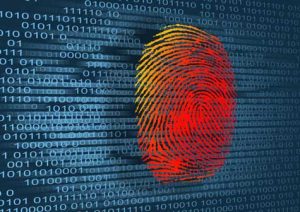Love them or hate them, horror movies are a great source of study for anyone looking at forensic science courses online.
Grizzly and bloody, the scenes in horror movies can emulate those that a forensic scientist may work on in real life. The horror movie franchise ‘Halloween’ presents a significant challenge to forensic scientists.
What is a forensic scientist?
Wherever a person goes, they leave behind evidence of being there. Even by wearing gloves to commit a burglary, or an elaborate disguise to commit murder – like Michael Myers did in Halloween and sequels – there is DNA evidence left behind.
It is the role of the forensic scientist to comb a crime scene for clues. In some cases, it may be obvious what a ‘scenes of crime officer’, or SOCO, is looking for. But they may also come across something that is relevant but unexplained at that time.
SOCOs document everything, from keeping a long list of evidence seized to photographing the crime scene.
They use a wide variety of techniques, and with scientific and technological advances, they have even more tools and processes at their fingertips to solve crimes through forensic evidence.
Forensic science and the Halloween films
Forensic science courses online will highlight the number of different techniques that forensic scientists can use to collect evidence and information from a crime scene.
Michael Myers is a deep and complex character, psychopathic and a schizophrenic. He claims to hear voices in his head, instructing him to kill, with the first murder being committed when he was six years of age; his sister. The date was Halloween.
Michael waited for his parents and the police to arrive after he committed the murder but, during the years of incarceration in a mental facility, Michael didn’t speak, thus did not admit nor deny the murder.
So how could forensic science contribute to proving or disproving his guilt?
- Mode of murder
Judith Myers, Michael’s older sister, was stabbed with a butcher’s knife. Michael did not wear gloves; therefore, his prints would have been on the knife.
However, this is not enough evidence to prove guilt, as it could be argued that Michael had attempted to help his sister, thus his prints and DNA would have been on the body and the knife.
- Blood spatter
When someone is stabbed, there are patterns of blood spatter on the body, in the room or area, and on the perpetrator that indicate how the stabbing took place.
When Michael stabbed his sister, he did so several times and the blood spatter would have been on him. He was wearing a clown outfit at the time of the stabbing, and this would have been processed for all kinds of DNA and blood spatter evidence.
- The murder site
In the film, Michael moves around the house as part of the process of killing his sister. He firstly moves upstairs to find the clown outfit. He then returns downstairs to the kitchen to locate the butcher’s knife before walking back upstairs where he commits the crime. Finally, Michael walks back downstairs and out into the front yard to wait for his parents and the police.
A forensic scientist would collect this information from everywhere in the house to confirm the movement of Michael Myers in the property.
And the story goes on…
Michael broke free from the sanatorium where he was incarcerated and murdered several other people in order to try and murder his remaining siblings. The rampage continued in sequel films, although at the end of the first Halloween film, Michael Myers is seen to be consumed by a raging fire.
Forensic science diplomas look carefully at all the types of evidence that a criminal leaves behind. In the case of Michael, his killings did not shy away from brutality. The use of a bladed weapon, such as a knife, means that the victim meats a grizzly death but also means that the crime scene is awash with evidence. He saw no need in preventing evidence, suggesting he was there and he had murdered them, because he was not hiding.
The forensic jigsaw
Every crime scene tells a story, some more than others. As a forensic scientist, you would be expected to remain objective and detached from the emotion of the event by systematically and diligently collecting and processing the evidence. The smallest hair or saliva can link someone to a crime or to a crime scene.
Forensic science has had a huge impact on how crimes are solved. Could you be the forensic scientist that helps piece the jigsaw of a crime together?
